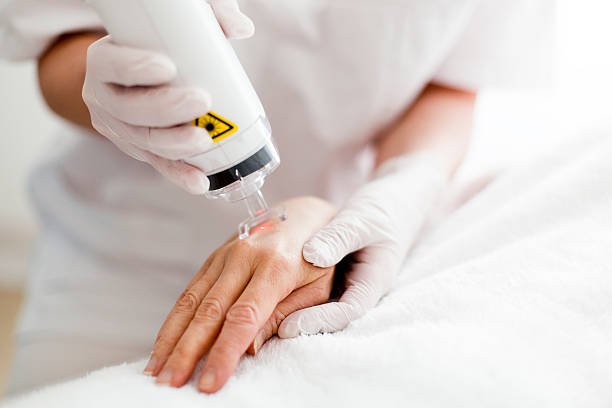What You Should Know About Laser Skin Surgery

The procedure of laser skin resurfacing uses a laser to change the surface of skin. It is used to improve the appearance of skin with acne scars, fine lines, and sun damage. Lasers are extremely precise tools that produce a narrow beam of light that travels in a single direction. Using a laser, this dermatologist in ny can target specific layers of skin and replace them with new cells. During the procedure, the patient may feel a snapping sound, see a little blood, or have a small amount of discomfort.
Depending on the condition of the skin, lasers can target damaged skin on the surface as well as the aging collagen in deeper layers. Laser energy can help improve skin texture at the superficial level by stimulating the body's natural healing process and encouraging the production of new collagen and elastin. These two proteins are responsible for skin firmness and elasticity. In addition to improving skin texture, laser treatments can also help prevent the occurrence of skin cancer in the first place.
After undergoing laser skin resurfacing, you can expect your skin to be smooth, clear, and more youthful-looking. You should avoid excessive sun exposure during this period to avoid accelerating the healing process. Although there are risks of infection, the procedure is safe and will result in a natural-looking outcome. You will need to follow the surgeon's after-care instructions to avoid any potential side effects. These include proper aftercare, cold compresses, and skin ointments to help your skin recover faster.
A laser has two main modes. An ablative laser removes the outer layers of skin, while a nonablated laser uses energy to target the deeper tissue beneath the surface. The non-ablative laser produces less damage than ablative lasers and requires fewer sessions. But it does have its own disadvantages. It has a lower success rate than ablative lasers, but if you have dark skin and want to treat a large area, non-ablative lasers are a better choice.
While laser skin surgery is considered a safe and effective method for treating various skin conditions, it is prone to errors. The FDA has approved several lasers that are widely available, including Fraxel Repair, which removes layers of tissue and promotes collagen production. Suitable for deeper wrinkles and acne scars, Fraxel Repair can also remove skin laxity and treat angiofibroma. Although it is not always recommended, it is the preferred option for certain conditions.
Downtime is crucial for healing after laser skin resurfacing. This will minimize the risk of side effects, and help you achieve your desired results. Depending on the type of laser used, recovery can last anywhere from three to 10 days. Ablative lasers require longer downtime, and patients should expect redness and a small amount of swelling. Patients should avoid tanning and public pools during recovery. They should also wear sunscreen to prevent the sun's damaging UV rays. Click to read more on the advantages of laser resurfacing.
During laser skin resurfacing, a doctor will select a laser and gradually move it around the skin. The treatment area will be covered with bandages to minimize discomfort. Patients should refrain from smoking for two weeks before the procedure, as it interferes with the healing process. If the procedure is extensive, a patient may be sedated so they can drive themselves home safely. The procedure is typically an outpatient procedure. However, extensive resurfacing may require sedation.
This post: https://en.wikipedia.org/wiki/Photorejuvenation, will help you understand the topic even better.
